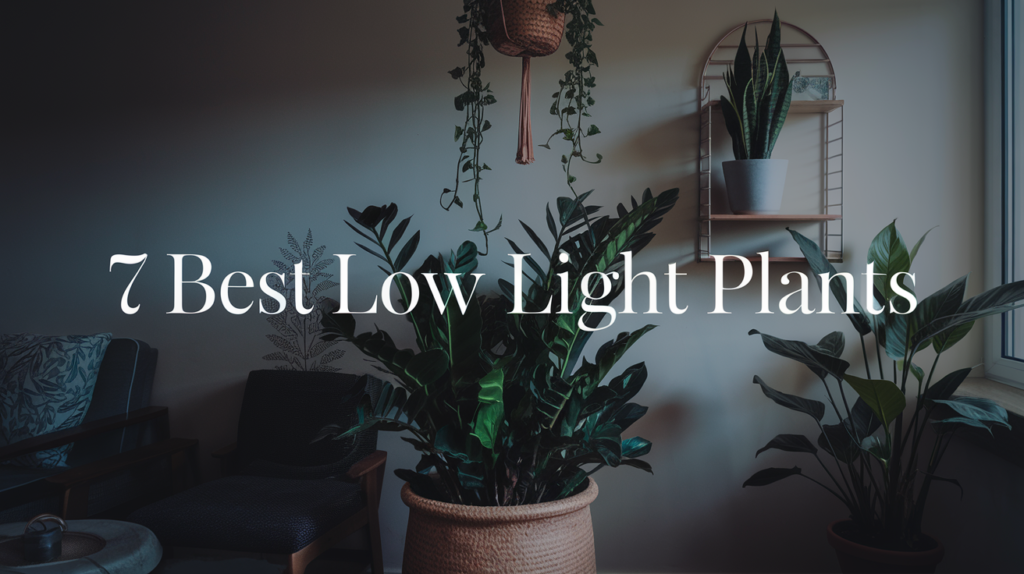7 Best Low Light Plants for Dark Corners in Apartments
Are you bored of staring at dull, empty corners in your apartment? 🏠 Do you long for a touch of greenery but struggle with low light conditions? You’re not alone! Many urban dwellers face the challenge of bringing life to their living spaces, especially in darker areas. But fear not, plant lovers! There’s a solution that will transform those gloomy nooks into vibrant, lush oases.
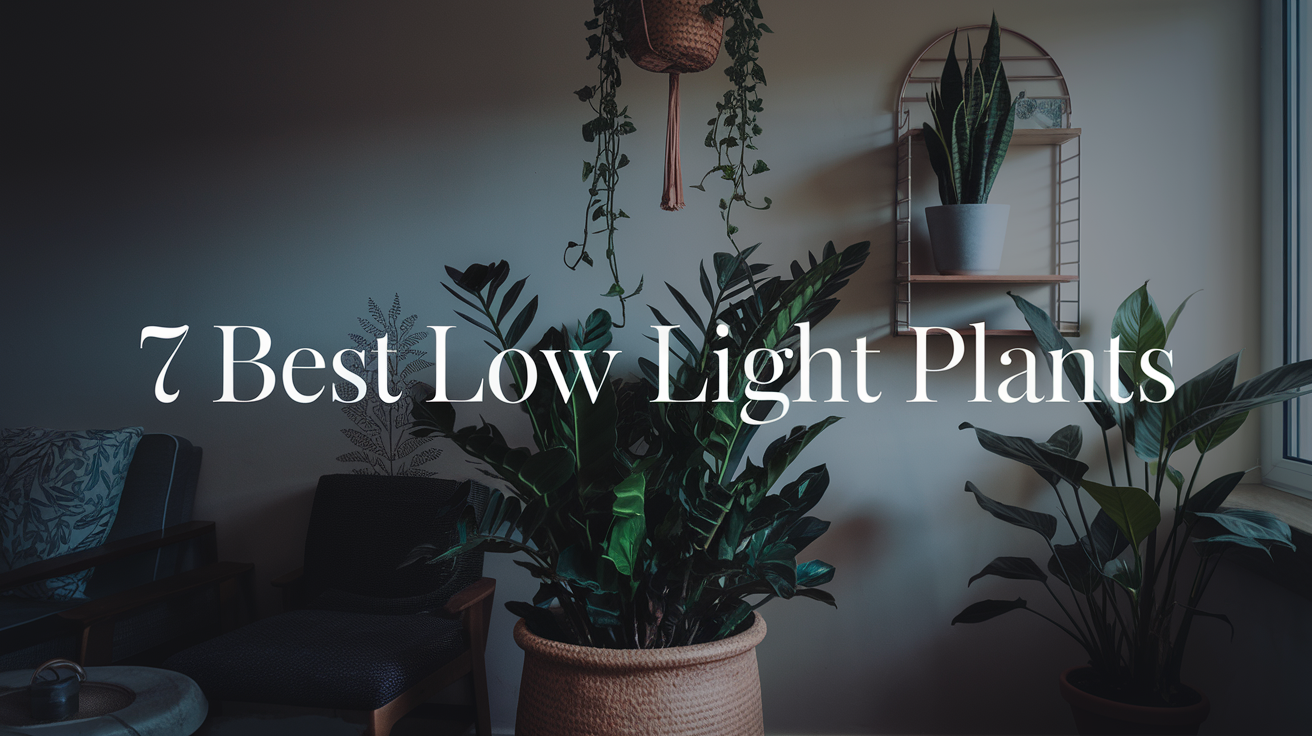
Introducing low light plants – nature’s answer to dim apartments! These resilient green companions not only thrive in shadowy spots but also purify the air and boost your mood. From the indestructible Snake Plant to the elegant Peace Lily, there’s a perfect plant for every dark corner. But which ones are the best? And how do you care for them to ensure they flourish?
In this blog post, we’ll unveil the 7 best low light plants that will breathe life into your apartment’s darkest corners. We’ll explore their benefits, share essential care tips, and guide you in choosing the right plant for your space. Get ready to discover creative display ideas and learn how to troubleshoot common issues. Whether you’re a seasoned plant parent or a nervous newbie, we’ve got you covered with everything you need to know about cultivating a thriving indoor garden, even in the dimmest of conditions. Let’s dive in and turn those shadowy spots into a green paradise! 🌿✨
Top 7 Low Light Plants for Dark Corners
Here are the detailed explanation about Top 7 Low Light Plants for Dark Corners in Your apartments.
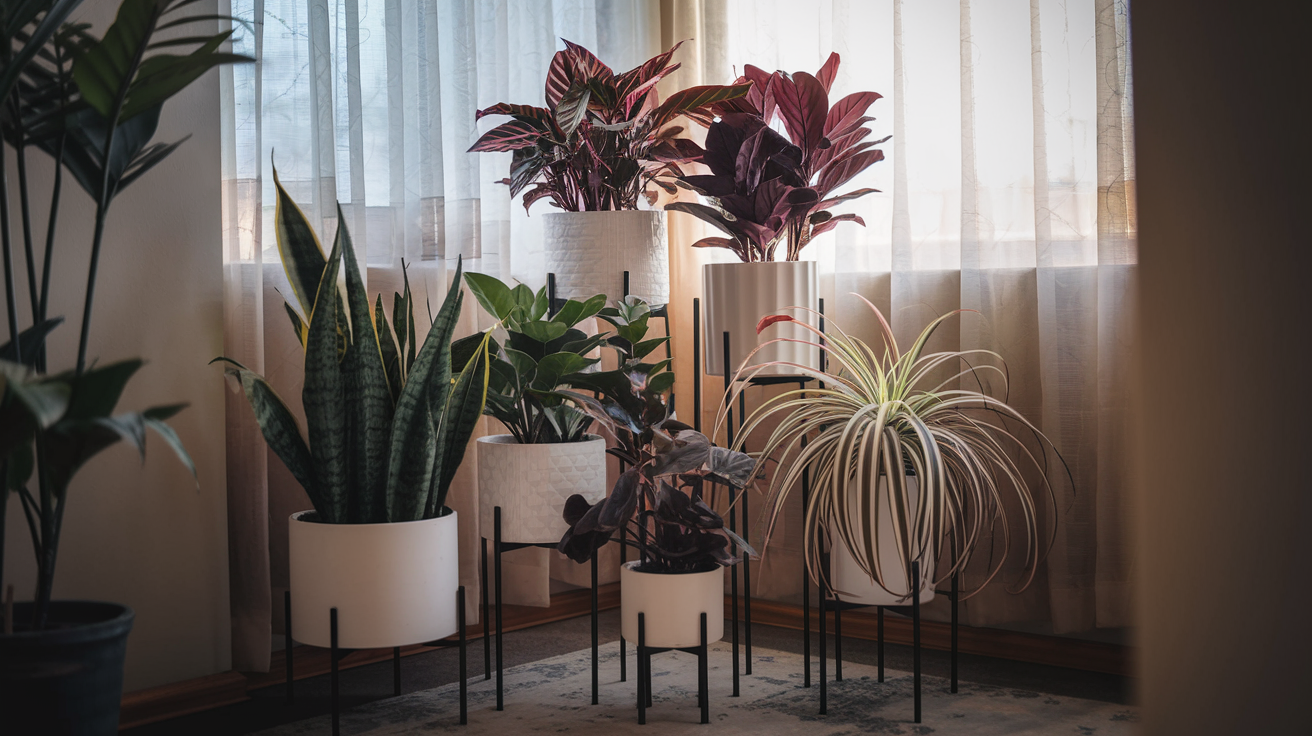
1. Jade Pothos (Epipremnum aureum ‘Jade’)
The Jade Pothos, also known as Epipremnum aureum ‘Jade’, is an excellent choice for dark corners in apartments. This fast-growing vine thrives in low light conditions and requires minimal care. Its glossy, heart-shaped leaves add a vibrant touch of green to any space.
Key features:
- Grows well in low light
- Requires minimal water
- Can grow up to 30 feet if unpruned
- Toxic to pets and humans if ingested
Care tips:
- Water when the soil feels dry
- Tolerates various light conditions
- Ideal for hanging baskets or trailing from shelves
2. Cast Iron Plant (Aspidistra elatior)
True to its name, the Cast Iron Plant is incredibly resilient and perfect for those who tend to neglect their plants. It thrives in low light and can withstand inconsistent care, making it an ideal choice for dark corners in apartments.
| Feature | Description |
|---|---|
| Height | Up to 3 feet |
| Light | Low to moderate |
| Water | Low to moderate |
| Toxicity | Non-toxic |
3. Snake Plant (Dracaena trifasciata)
The Snake Plant, with its tall, sword-like leaves, is a striking addition to any dark corner. It’s known for its ability to purify air and tolerate neglect, making it an excellent choice for busy apartment dwellers.
Care requirements:
- Prefers low to moderate light
- Requires infrequent watering
- Avoid overwatering to prevent root rot
- Can grow up to 3-4 feet tall
4. ZZ Plant (Zamioculcas zamiifolia)
The ZZ Plant is a top choice for those seeking a low-maintenance plant that thrives in low light conditions. Its glossy, dark green leaves add a touch of elegance to any space.
Key features:
- Drought-tolerant
- Grows well in low light
- Can reach up to 3 feet in height
- Toxic if ingested
5. Chinese Evergreen (Aglaonema spp.)
Chinese Evergreens are known for their adaptability to low light conditions and their vibrant foliage. These plants are perfect for adding a pop of color to dark corners in apartments.
Care tips:
- Prefers low to moderate light
- Keep soil consistently moist
- Can grow up to 3 feet tall
- Toxic to pets and humans
6. Peace Lily (Spathiphyllum)
The Peace Lily is an elegant plant that not only thrives in low light but also produces beautiful white flowers. It’s an excellent choice for adding a touch of sophistication to dark corners.
Key features:
- Produces white flowers even in low light
- Prefers consistently moist soil
- Can grow up to 3 feet tall
- Toxic to pets and humans if ingested
7. Spider Plant (Chlorophytum comosum)
The Spider Plant is a hardy and adaptable option for dark corners in apartments. Its arching leaves and ability to produce offspring plants make it an interesting and easy-to-grow choice.
Care requirements:
- Tolerates low light conditions
- Requires regular watering
- Can grow up to 12 inches tall
- Non-toxic to pets and humans
For more information on caring for low light plants, check out this helpful guide from The Spruce.
Now that we have covered the best low light plants for dark corners in apartments, let’s explore the numerous benefits these plants can bring to your living space in the next section, “Benefits of Low Light Plants in Apartments.”
Benefits of Low Light Plants in Apartments
Now that we’ve explored the top 7 low light plants for dark corners, let’s delve into the numerous benefits these plants offer for apartment dwellers.
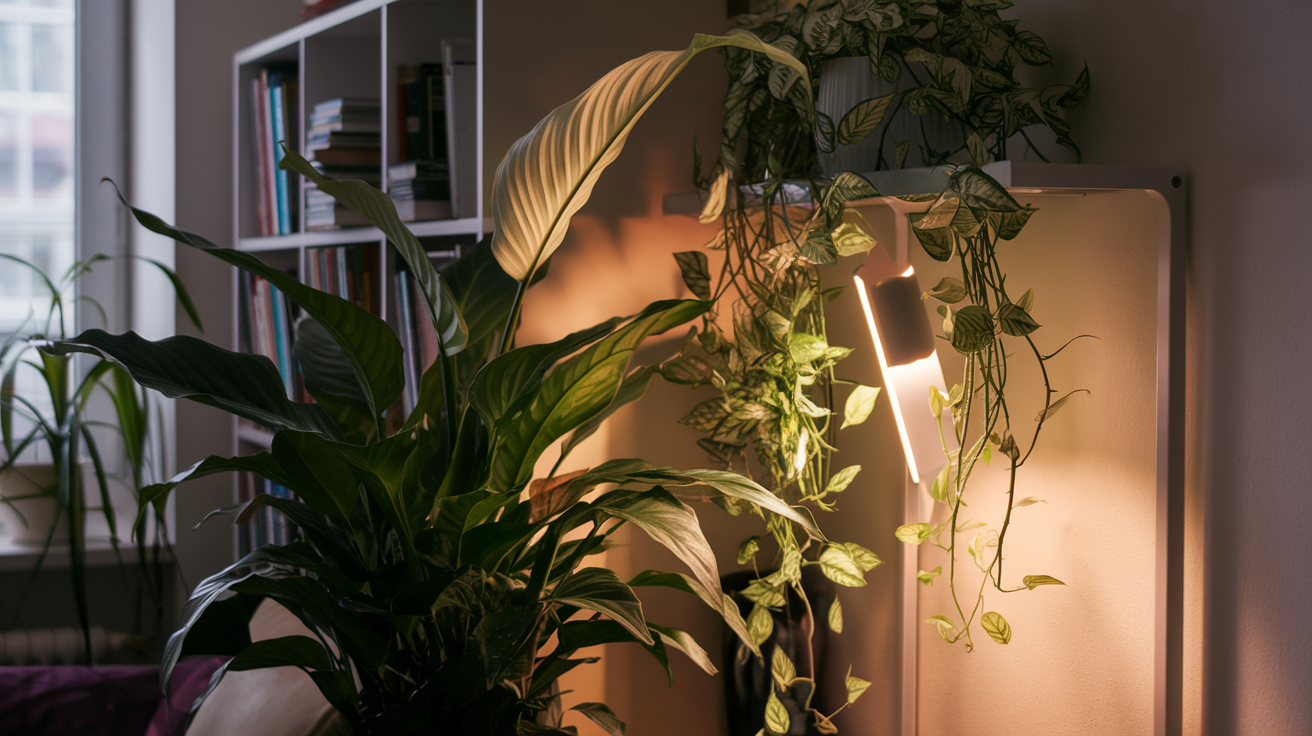
Improve air quality
Low light plants are not just decorative; they play a crucial role in enhancing indoor air quality. During photosynthesis, these plants absorb carbon dioxide and release oxygen, creating a healthier living environment. Some plants, like orchids, succulents, and epiphytic bromeliads, continue to produce oxygen even at night, making them ideal for bedrooms. Specific varieties such as the Peace Lily, Gerber Daisy, and Bamboo Palm are particularly effective in purifying indoor air by filtering pollutants.
Add greenery to dark spaces
One of the most significant advantages of low light plants is their ability to thrive in dimly lit areas. They bring life and color to otherwise dull corners, transforming dark spaces into vibrant, green oases. Plants like the Cast Iron Plant (Aspidistra elatior) and Snake Plant (Dracaena trifasciata) are excellent choices for areas with minimal natural light, adding a touch of nature to even the darkest corners of your apartment.
Low maintenance options
Many low light plants are also low maintenance, making them perfect for busy apartment dwellers or those new to plant care. Here’s a comparison of some easy-to-care-for options:
| Plant Name | Light Requirement | Watering Frequency | Special Features |
|---|---|---|---|
| ZZ Plant | Low light | Infrequent | Drought tolerant |
| Snake Plant | Low to moderate | Infrequent | Air purifying |
| Pothos | Low to bright indirect | Moderate | Trailing vines |
| Lucky Bamboo | Low to moderate | Can grow in water | Versatile for decor |
These plants require minimal attention, allowing you to enjoy the benefits of indoor greenery without the stress of complicated care routines.
Boost mood and well-being
Incorporating low light plants into your apartment can significantly improve your overall mood and well-being. Studies have shown that the presence of plants in living spaces can:
- Reduce stress levels
- Enhance concentration and productivity
- Improve memory
- Boost overall sense of well-being
For instance, the Anthurium houseplant is noted for its ability to lower stress levels, contributing to a more relaxed living environment.
With these benefits in mind, next, we’ll explore essential care tips to ensure your low light plants thrive in your apartment setting.
Care Tips for Low Light Plants
Now that we’ve explored the benefits of low light plants in apartments, let’s dive into the essential care tips to keep these resilient greens thriving in your dark corners.
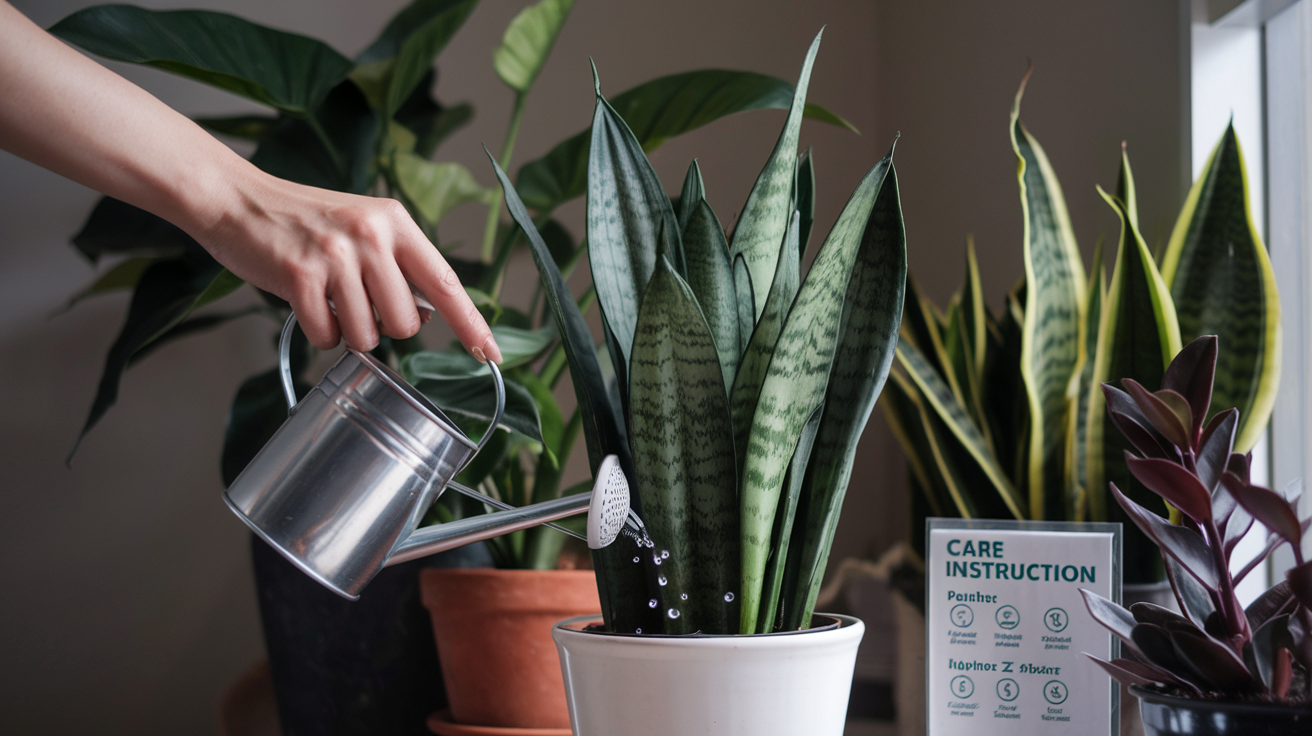
Proper watering techniques
Watering low light plants requires a careful approach:
- Use a moisture meter to avoid overwatering
- Allow soil to dry between waterings
- Reduce watering frequency in winter months
| Plant Type | Watering Frequency |
|---|---|
| Snake Plant | Every 2-3 weeks |
| ZZ Plant | Every 2-4 weeks |
| Pothos | When top inch of soil is dry |
Light requirements and placement
Despite their tolerance for low light, these plants still need some illumination:
- Place near north-facing windows for optimal growth
- Utilize spaces with filtered shade or indirect light
- Consider using grow lights in extremely dark areas
Humidity considerations
Many low light plants thrive in humid environments:
- Mist leaves regularly
- Use a humidifier in dry rooms
- Group plants together to create a microclimate
Soil and fertilizer needs
Proper soil and nutrition are crucial for low light plants:
- Use well-draining potting mix
- Fertilize sparingly due to slower growth rates
- Apply liquid fertilizer monthly during growing season
Remember to rotate your plants occasionally for even growth and prune dead leaves to maintain their health and appearance. With these care tips in mind, you’ll be well-equipped to choose the right low light plant for your space, which we’ll explore in the next section.
Choosing the Right Low Light Plant
Now that we’ve covered essential care tips for low light plants, let’s focus on choosing the right plant for your space. This crucial step ensures your green companions thrive in their new home.
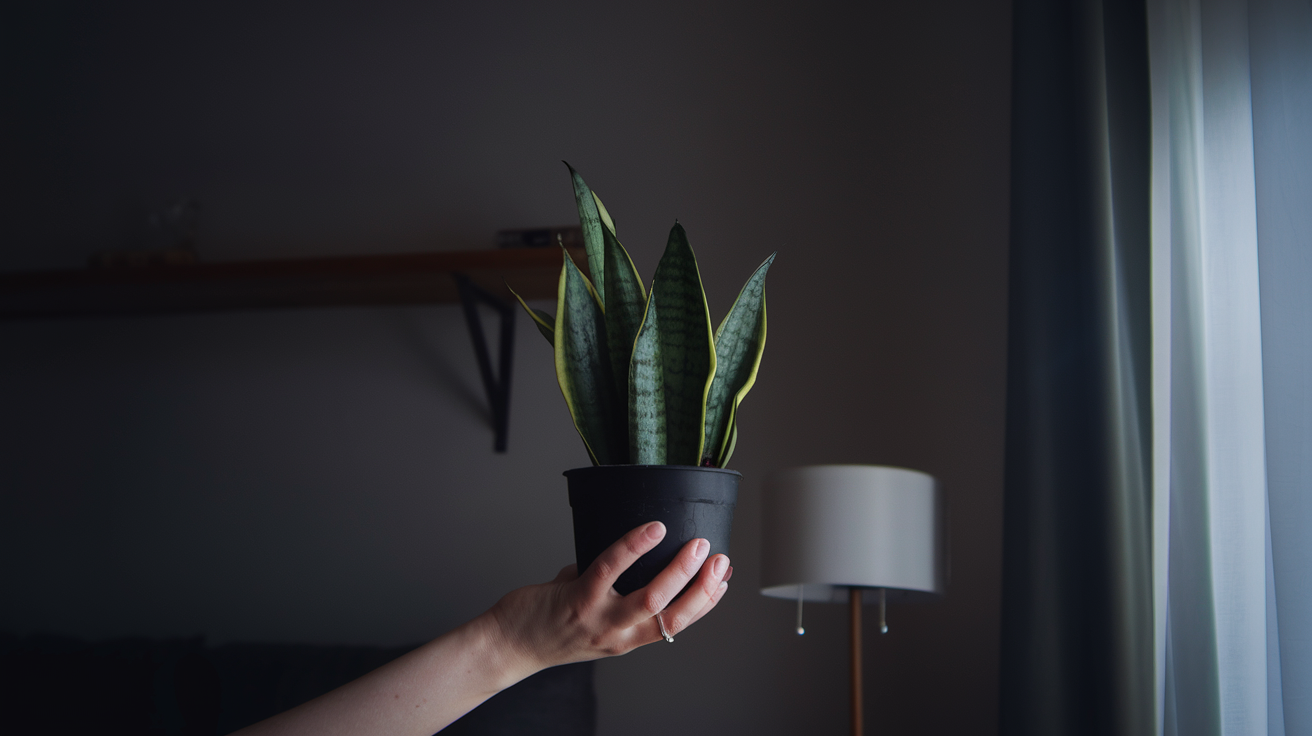
Assessing your space and light conditions
Before selecting a plant, evaluate your living area:
- Identify the darkest corners
- Measure light intensity using a light meter or smartphone app
- Note any nearby windows and their orientation
| Light Level | Description | Suitable Plants |
|---|---|---|
| Low | 2-3 feet from north-facing window | ZZ plant, Snake plant |
| Very Low | No direct sunlight | Cast iron plant, Lucky bamboo |
Considering plant size and growth habits
Match your plant’s potential size to your available space:
- Compact options: Bird’s nest fern, Lucky bamboo
- Trailing plants for shelves: Jade pothos
- Floor plants: ZZ plant, Cast iron plant
Toxicity concerns for pets and children
Safety is paramount when choosing plants:
- Non-toxic options: Cast iron plant, Spider plant
- Mildly toxic (keep out of reach): Peace lily, Pothos
- Always research plant toxicity before purchasing
Matching plant care requirements to your lifestyle
Consider your daily routine and plant care abilities:
- Watering frequency
- Humidity needs
- Fertilization requirements
- Pruning and maintenance
For busy individuals, opt for low-maintenance plants like the ZZ plant or snake plant, which can tolerate occasional neglect and infrequent watering.
With these factors in mind, you’re now equipped to select the perfect low light plant for your apartment’s dark corners. In the next section, we’ll explore creative ways to display these resilient plants, enhancing your living space’s aesthetic appeal while maximizing their growth potential.
Creative Ways to Display Low Light Plants
Now that we’ve covered how to choose the right low light plant for your apartment, let’s explore creative ways to display these green companions in your living space.
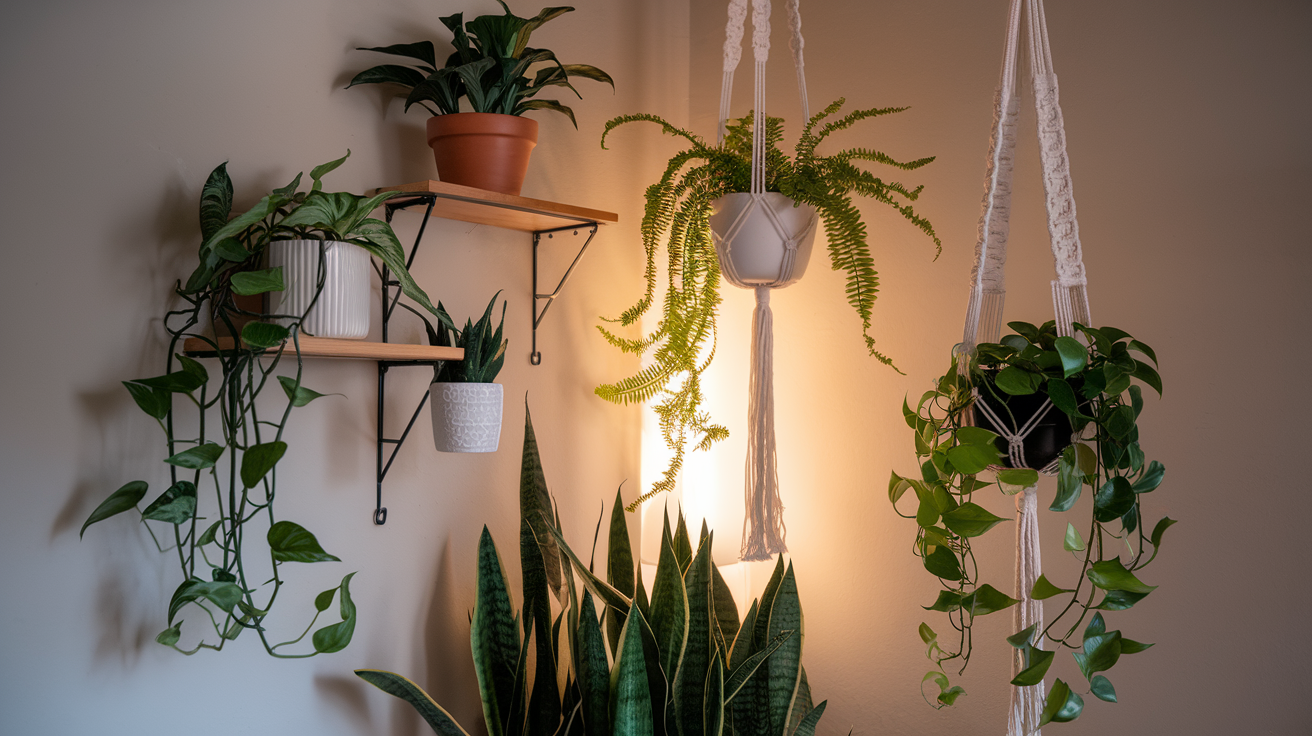
Hanging baskets and trailing vines
Hanging baskets are an excellent way to showcase low light plants, especially those with trailing vines. They not only save floor space but also add a dynamic visual element to your room. Consider using macrame holders or wall hooks to elevate your plants and optimize light exposure. Some ideal plants for this display method include:
- Pothos
- Philodendron
- String of Pearls
Shelf arrangements
Bookcases and shelves offer versatile spaces for displaying low light plants. Arrange plants of varying heights and textures to create an eye-catching display. For shelves with limited natural light, consider using grow lights to ensure your plants thrive. Here’s a simple guide for shelf arrangements:
| Shelf Level | Plant Type | Light Requirement |
|---|---|---|
| Top | Taller plants | Higher light |
| Middle | Medium-sized plants | Moderate light |
| Bottom | Low-profile or cascading plants | Lower light |
Floor-standing planters
For larger low light plants, floor-standing planters are an excellent choice. They can serve as striking focal points in dark corners of your apartment. Consider using plant stands of various heights to create a multi-level display. Some ideas include:
- Using a ladder as a unique plant stand
- Repurposing wooden crates for a rustic look
- Incorporating a sleek plant stand for a modern aesthetic
Terrariums and glass containers
Terrariums and glass containers are perfect for small low light plants, creating miniature ecosystems that add a touch of whimsy to your space. These enclosed environments help maintain humidity levels, making them ideal for tropical plants. Consider these options:
- Repurposed fish tanks
- Glass jars or mason jars
- Specially designed terrarium containers
By implementing these creative display methods, you can transform dark corners into vibrant green spaces. With your low light plants beautifully arranged, you’ll be well-prepared to tackle any issues that may arise. In the next section, we’ll explore troubleshooting common low light plant issues to ensure your green companions continue to thrive in their new displays.
Troubleshooting Common Low Light Plant Issues
Now that we’ve explored creative ways to display low light plants, let’s address some common issues you might encounter when growing these resilient species in dark corners of your apartment.
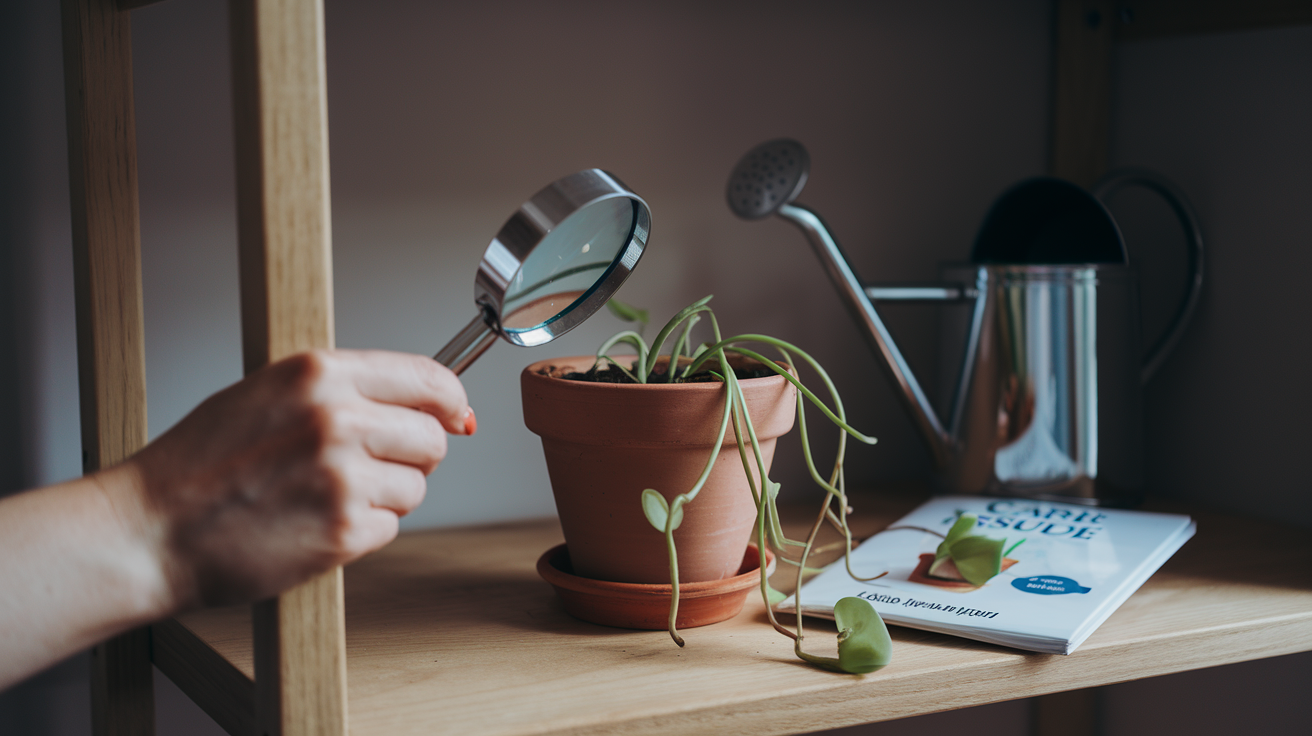
A. Yellowing leaves
Yellowing leaves often indicate insufficient light or overwatering. To address this:
- Gradually move the plant closer to a light source
- Adjust watering schedule, allowing soil to dry between waterings
- Use artificial grow lights if natural light is limited
B. Leggy growth
Leggy growth occurs when plants stretch towards light sources, resulting in spindly stems:
- Reposition the plant to a brighter area
- Trim back elongated stems to encourage bushier growth
- Rotate the plant regularly to ensure even light exposure
C. Pest infestations
Low light conditions can make plants more susceptible to pests. Here’s how to manage infestations:
| Prevention | Treatment |
|---|---|
| Regular inspection | Remove affected leaves |
| Maintain proper humidity | Use neem oil or insecticidal soap |
| Ensure good air circulation | Isolate infected plants |
D. Root rot and overwatering
Root rot is a common issue in low light environments due to slower evaporation:
- Adjust watering schedule based on light levels
- Ensure proper drainage in pots
- Use well-draining soil mix
- Check roots periodically for signs of rot
Remember, while low light plants are adaptable, they still require attentive care. Monitor your plants regularly and make adjustments as needed to maintain their health.
With these troubleshooting tips in mind, you’ll be better equipped to handle common issues that may arise with your low light plants. Next, we’ll explore some advanced low light plant options for those looking to expand their indoor garden repertoire.
Advanced Low Light Plant Options
Now that we’ve covered troubleshooting common low light plant issues, let’s explore some advanced options for experienced plant parents looking to expand their indoor garden.
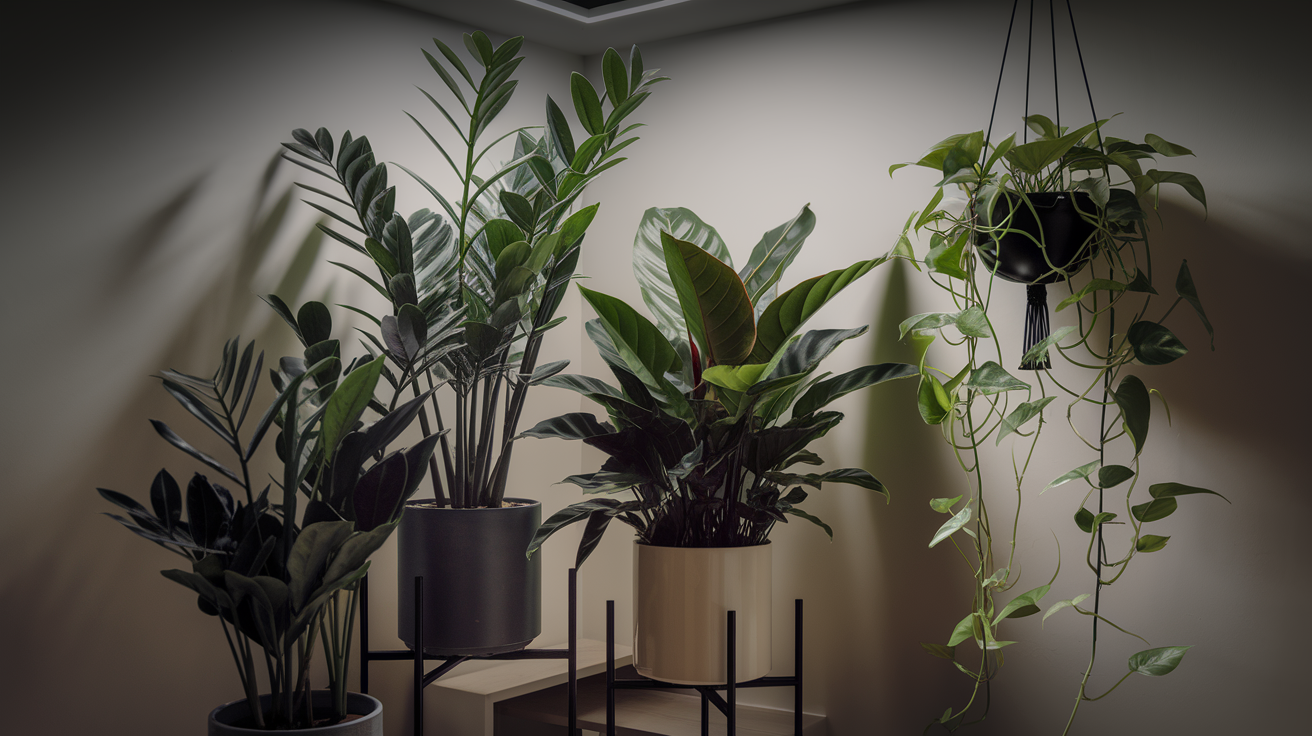
Unique varieties for experienced plant parents
For those seeking a challenge, consider these unique low light plants:
- Rex Begonia: Known for its striking foliage, this plant requires careful watering and indirect light.
- Prayer Plant: Features intricate leaf patterns and showcases a unique behavior of folding its leaves at night.
- Neon Prayer Plant (Maranta leuconeura ‘Marisela’): Boasts vibrant foliage and thrives in high humidity and indirect light.
Rare low light plants to consider
Experienced plant enthusiasts may want to add these rare specimens to their collection:
- Staghorn Fern (Platycerium bifurcatum): Unique epiphytic growth habit, requires dry periods between waterings.
- Watermelon Peperomia (Peperomia argyreia): Praised for its vibrant foliage resembling watermelon rind patterns.
- String of Nickels (Dischidia imbricata): An appealing trailing plant with coin-shaped leaves.
Combining different low light plants for visual interest
Create stunning displays by pairing complementary low light plants:
| Plant Combination | Visual Effect |
|---|---|
| ZZ Plant + Boston Fern | Contrasting textures |
| Chinese Evergreen + Pothos | Varied leaf patterns |
| Snake Plant + Spider Plant | Upright and trailing mix |
Creating a low light plant ecosystem
To establish a thriving low light plant ecosystem:
- Choose plants with similar care requirements
- Vary plant heights and growth habits
- Incorporate air-purifying varieties like Peace Lily and Spider Plant
- Use moisture-loving plants like Ferns to increase humidity
- Add trailing plants such as Pothos or English Ivy for vertical interest
Remember to monitor light levels, maintain proper humidity, and adjust care routines as needed to ensure your advanced low light plant collection thrives in its dark corner ecosystem.
Concluding 7 Best Low Light Plants for Dark Corners in Apartments
Low light plants are a fantastic solution for brightening up dark corners in apartments. From the resilient Snake Plant to the elegant Peace Lily, there are numerous options to suit various preferences and skill levels. These plants not only add visual appeal but also offer benefits like air purification and improved well-being. With proper care, including appropriate watering and occasional exposure to brighter light, these plants can thrive even in challenging environments.
Whether you’re a beginner or an experienced plant enthusiast, incorporating low light plants into your living space is a rewarding endeavor. By following the care tips and creative display ideas discussed in this post, you can transform your dark corners into vibrant, green oases. So go ahead, choose your favorite low light plant, and watch as it brings life and beauty to even the dimmest areas of your apartment.
